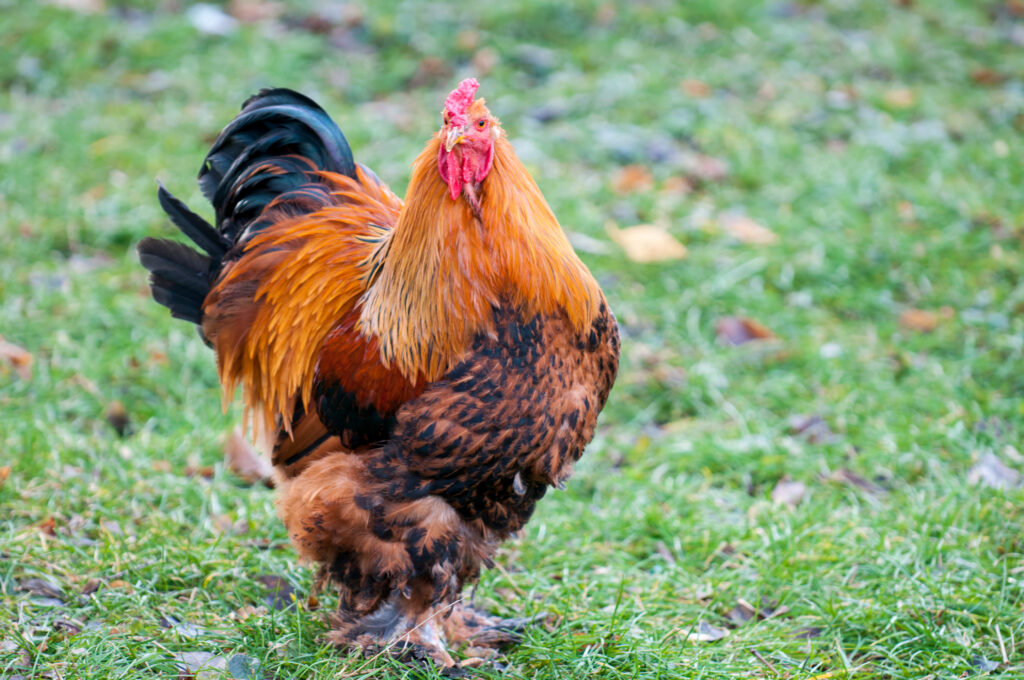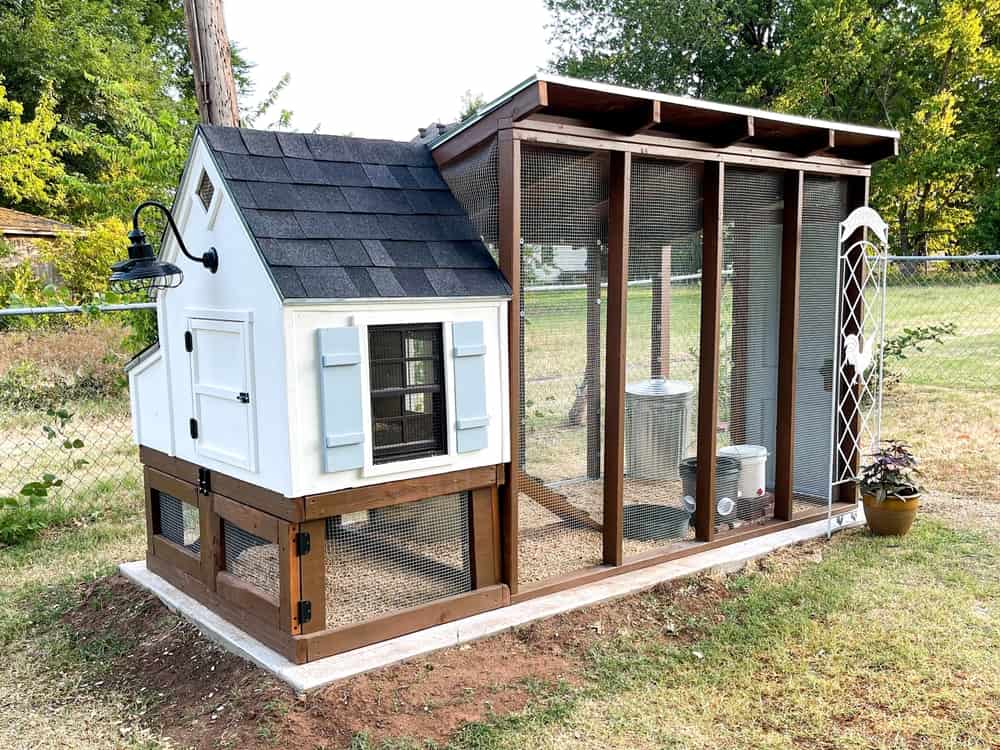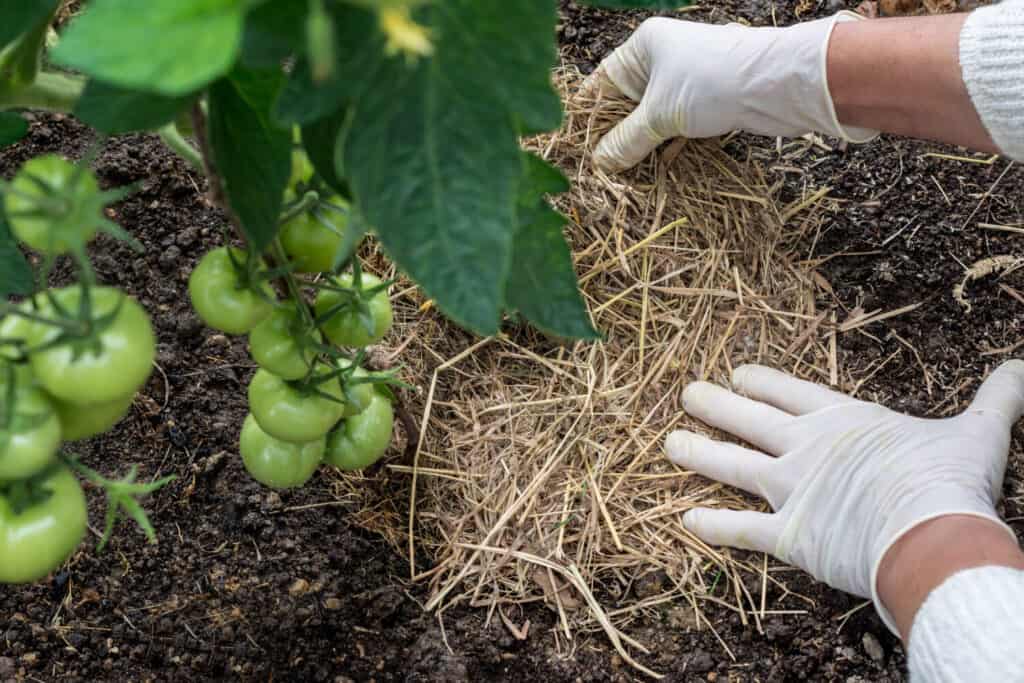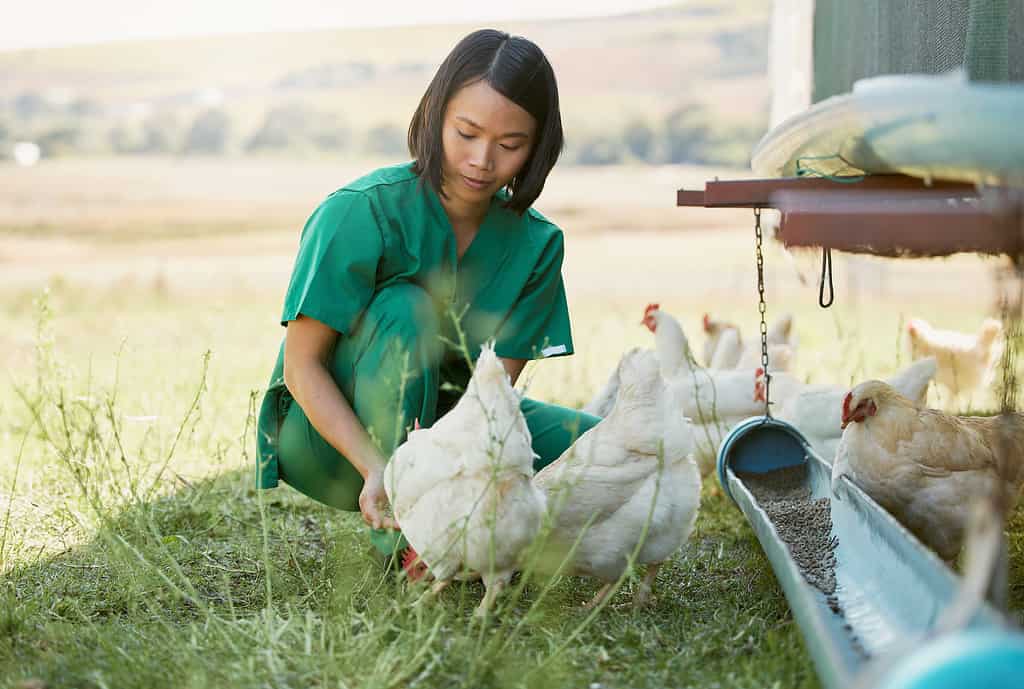A common breed of chicken kept for either its meat or its eggs is the Brahma. With huge heads and bodies, tremendous eggs, and amiable reputations, there’s a large market for this breed of chicken. Continue reading to find out how much a Brahma chicken will cost you if you want to raise one for meat or eggs.
Where Can You Buy Brahma Chickens?

Brahma chickens can weigh nearly 13 pounds!
©Yuriy Bartenev/Shutterstock.com
There aren’t many Brahma chicks accessible to purchase. A reputable breeder or a chicken hatchery like Cackle Hatchery or Meyer Hatchery are both places where you can purchase Brahmas. They can occasionally be purchased online as well.
Some poultry farms have adult Brahma chickens available for purchase. You can also go to the state fair and auctions in your area. To find people offering Brahma for sale, you may simply search online for what’s available near you.
How Much Does a Brahma Chicken Cost?

The Brahma chicken’s enormous size has earned it the moniker “King of Poultry.” Hens and roosters are capable of weighing between 14 and 18 pounds, respectively. Brahma chickens are pricey for a number of reasons.
The Brahma is a great table bird, as would be assumed given their size. They produce stunning big brown eggs and are excellent egg layers. They are also quite charismatic. Because they are calm and non-aggressive, this breed is ideal for families.
Brahma chickens once sold for up to $150 per pair, mostly as a result of their resurgence in appeal in England throughout the 1800s. Currently, Brahma chicks will cost you about $7 and hatching eggs are $3 individually.
Costs Associated With Brahma Chickens
Exactly how much will it take to raise Brahma chickens? Whether you’re a prospective chicken farmer or just trying to decide if it’s for you. We appreciate you asking! Let’s examine the exact expenditures associated with keeping hens in the backyard.
You may breed the healthiest and happiest poultry imaginable by making wise decisions with every item you buy.
Chicken Coop

Make sure your chicken coop has no entry points for predators.
©Courtney Jenckes/Shutterstock.com
If you’re particularly skilled, you might be able to build a coop for very little money using repurposed materials. Scrap boards, sheet metal, and fencing are all excellent materials for chicken coop parts. As an alternative, you can decide to construct your own coop from scratch using fresh materials.
There are many chicken coop layouts available for purchase or download. Prefab chicken coops are definitely the best option if you’re unsure of your ability to build a coop manually or just haven’t got the additional resources and energy necessary.
Make sure the manufacturer of the chicken house you choose is familiar with hens and their requirements. Most pre-made chicken coops will run anywhere from $300 to $2,000.
Coop Maintenance
Only a small amount of upkeep will be needed on your chicken coop every year. Due to the large amount of waste that hens produce, you have to periodically clean out and change the bedding.
If the coop is a few years old, you may want to make a few modifications to it to ensure that predators cannot get inside, and if you use illumination, you could need to swap out a few lightbulbs. You shouldn’t pay more than $10 to $30 a year for this.
Bedding

Straw can be used for chicken bedding, and even mulching!
©Jurga Jot/Shutterstock.com
There are endless types of bedding materials that can be used in a chicken coop. Below you’ll find out a bit about the most common types and how much they cost on average.
Wood Shavings
Given that they are straightforward to come across at most farm or renovation stores, wood chips may now be the most common sort of bedding for hens. Keep away from the smaller shavings because they might be rather dusty.
Avoid using sawdust altogether! Because they are frequently simpler to clean up than hay wood shavings are widely used. The elevated amounts of nitrogen in Brahma chicken dung can be countered by the wood’s high acidity. Costs range from $6 to $10 for a compacted bale of wood shavings.
Hemp
When it comes to bedding for chickens, hemp is starting to gain traction. Although it was widespread in the United States years ago, it has just lately returned as a material for bedding for animals. It is favored for its capacity to absorb moisture, lack of particles, compostability, and inherent antibacterial qualities.
Although it costs more upfront than some other types of bedding, many individuals discover that it needs to be changed less frequently, making it more cost-effective overall. Industrial hemp bedding for chickens costs around $40 for a 45-pound bale.
Straw
Since straw was widely accessible on most agricultural land, it has been the material of choice for chicken bedding for decades. Because it is simple to compost and chickens like going through it, it remains a popular option.
In comparison to other kinds of bedding, straw has the drawbacks of being more costly and more difficult to get in some places. Additionally, it must be kept clean and in good condition because damp straw makes the ideal habitat for a variety of pests and illnesses. The average price of straw is $5 to $10 per bale
Feed

Each chick needs at least one pound of food per week!
©iStock.com/Jennifer Chamblee
The largest ongoing expense associated with rearing hens is this. For the initial 10 weeks, a chick will consume one pound of feed on average every week. A mature bird will require roughly one and a half pounds of feed each week.
However, that amount may decrease if the bird is allowed to forage for some of its own food in
the wild. Also, Brahma chickens adore scraps from the kitchen! What impact does feed have on the price of keeping hens in the backyard?
You should provide chick starter feed, which typically ranges in price from $0.50 to $0.75 per pound, with options that are organic being a bit more costly. With some organic solutions costing as high as $1.50 per pound, layer pellets for mature chickens can range in price from $0.25 to $0.75 per pound.
Cracked corn can be a great addition to other feed because it can be purchased for less than $0.20 per pound and satisfies chickens’ natural urges to nibble and peck for food. Keep in mind the following two suggestions to reduce your feed expenses.
The cost per pound of feed will drop dramatically if you buy it in large quantities, and the more leftovers from the kitchen you can provide for your chickens, the less packaged feed they’ll need.
Feeder
A feeder will cost between $20 and $25, whereas a heavy-duty type that can hold up to 50 pounds of feed at once will cost between $50 and $70. Your Brahma flock will have access to clean drinking water for days with a five-gallon waterer, which costs only approximately $35.
Healthcare

Just like domesticated dogs and cats, chickens need regular vet visits.
©iStock.com/PeopleImages
You won’t have to spend an excessive amount of money on chickens’ medical care because they are generally healthy animals. Mites, which can consume your chicken’s blood and cause health issues, are one of the most prevalent issues that chickens face.
You must get rid of these mites because otherwise, your chickens might not lay eggs in their contaminated nests. Permethrin or diatomaceous earth are the insecticides that most poultry breeders advise using.
Additionally, your chicken might occasionally contract a cold or another ailment that calls for medicine. For your chickens’ long-term health, it is best to safeguard them with immunizations against diseases including Newcastle bronchitis, fowl pox, and Marek’s disease.
Many people choose to risk losing their herd by waiting until there is an epidemic on their property. To preserve the birds, it is preferable to obtain the shots early.
Final Thoughts
Both children and adults can benefit much from raising hens. After you have some experience and the Brahma chickens are reliably laying eggs, it may become fairly lucrative. Cheap bedding can make you have to spend the majority of your time maintaining the coop, and if you don’t get your chickens vaccinated, they may be at risk of contracting a disease that might kill off your entire flock.
Utilizing the better materials won’t cost you a great deal of money in the long run because they last longer and save you time. We hope this guide helps you budget for your new flock of Brahma chickens!
The photo featured at the top of this post is © Adrian Eugen Ciobaniuc/Shutterstock.com
Thank you for reading! Have some feedback for us? Contact the AZ Animals editorial team.







